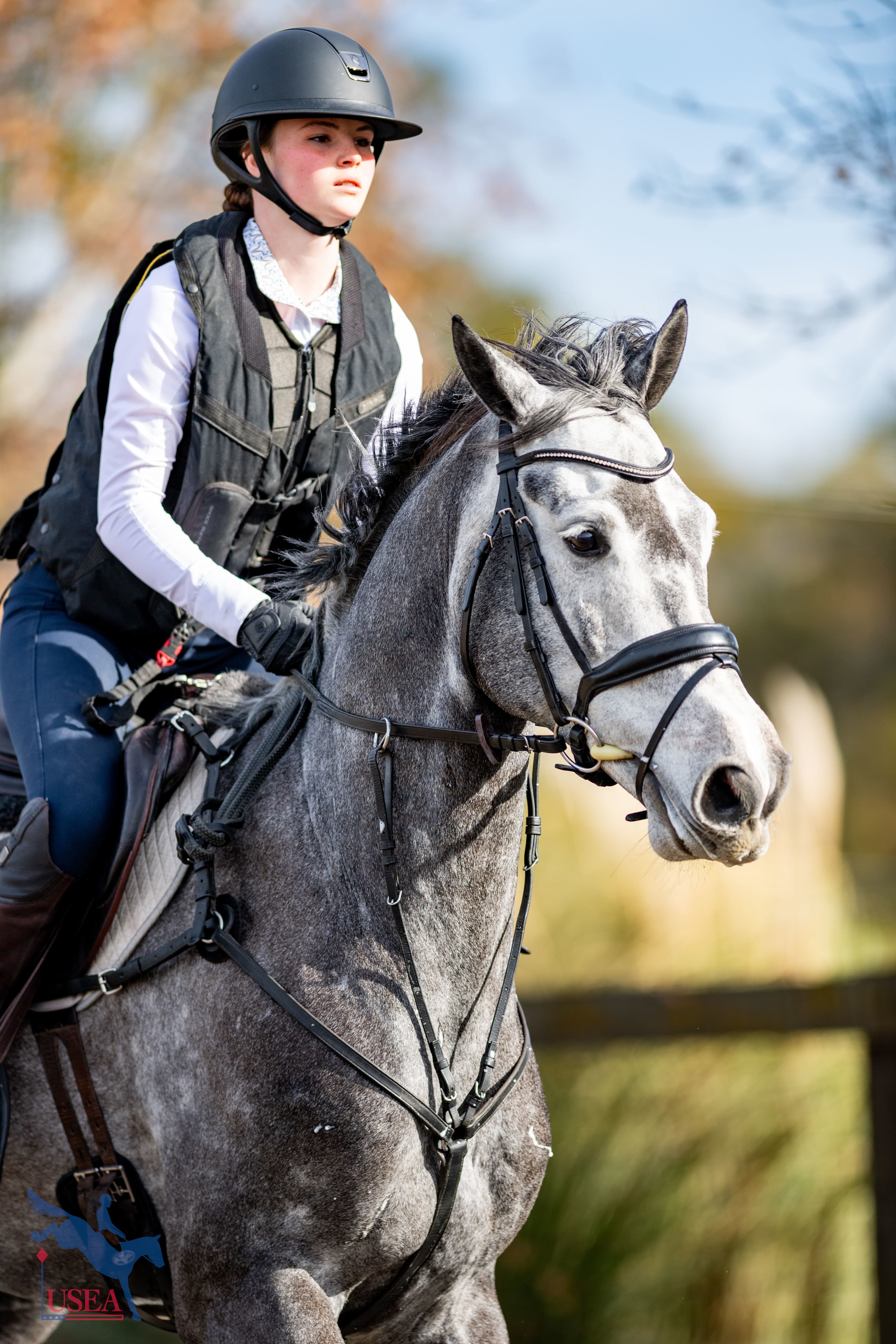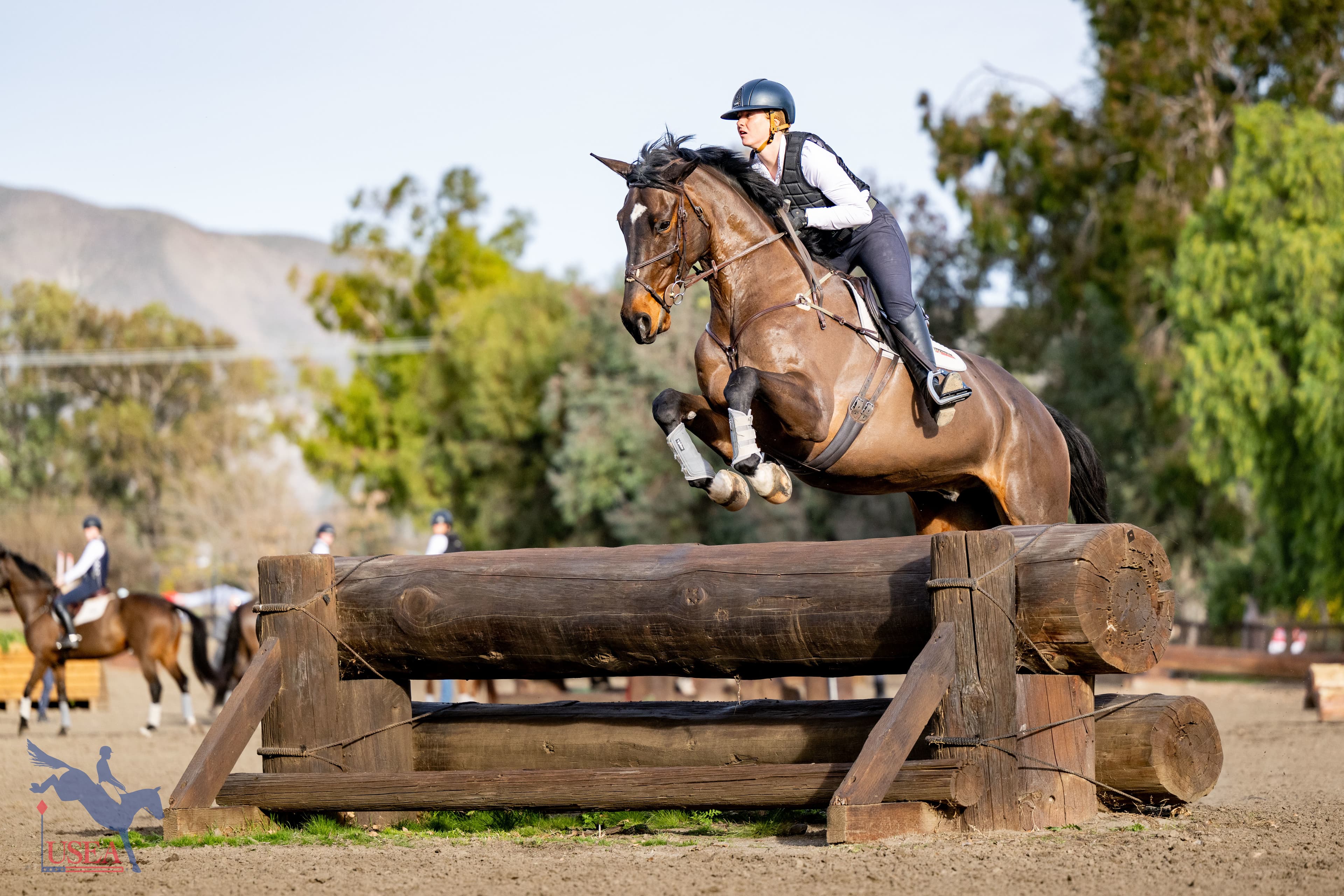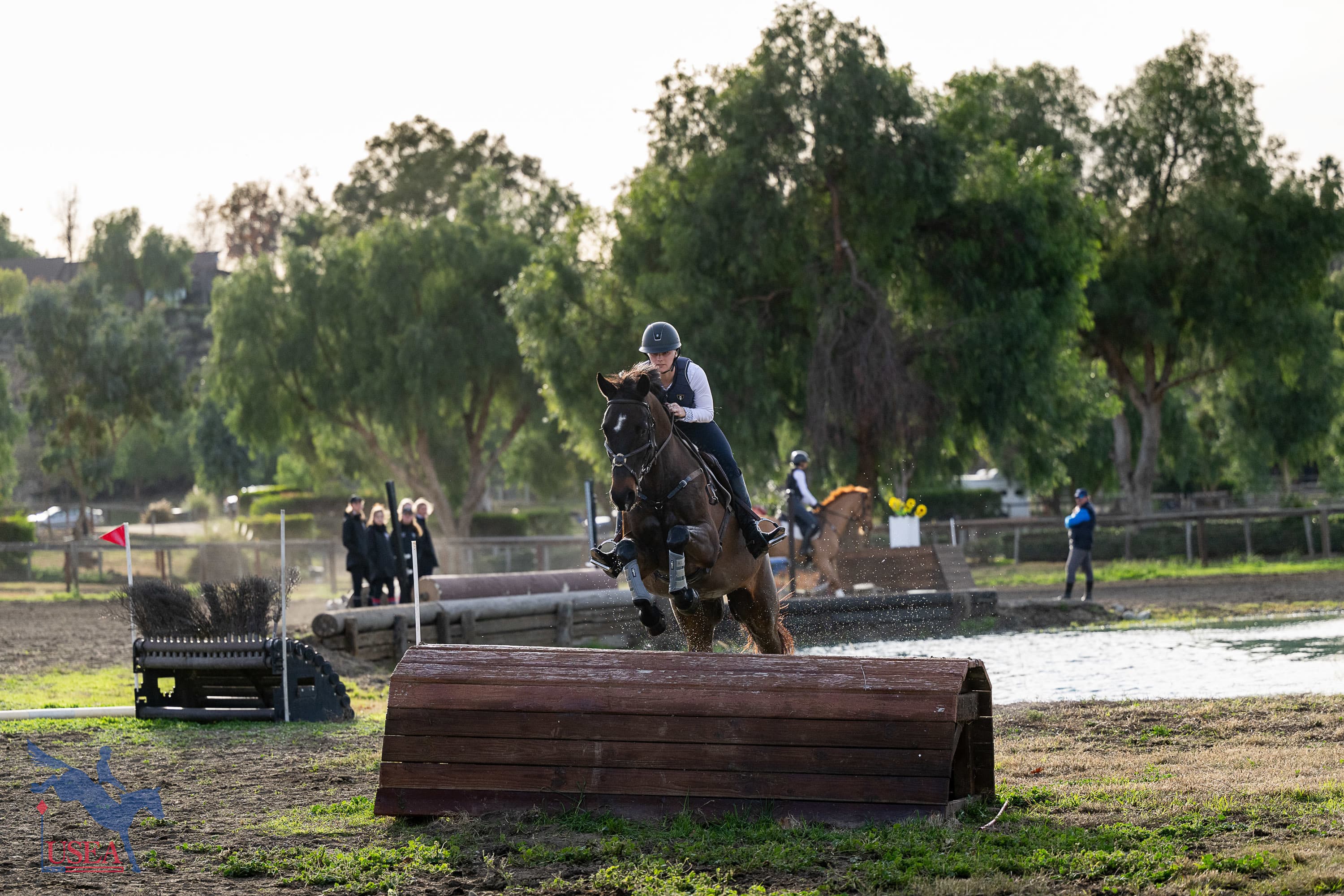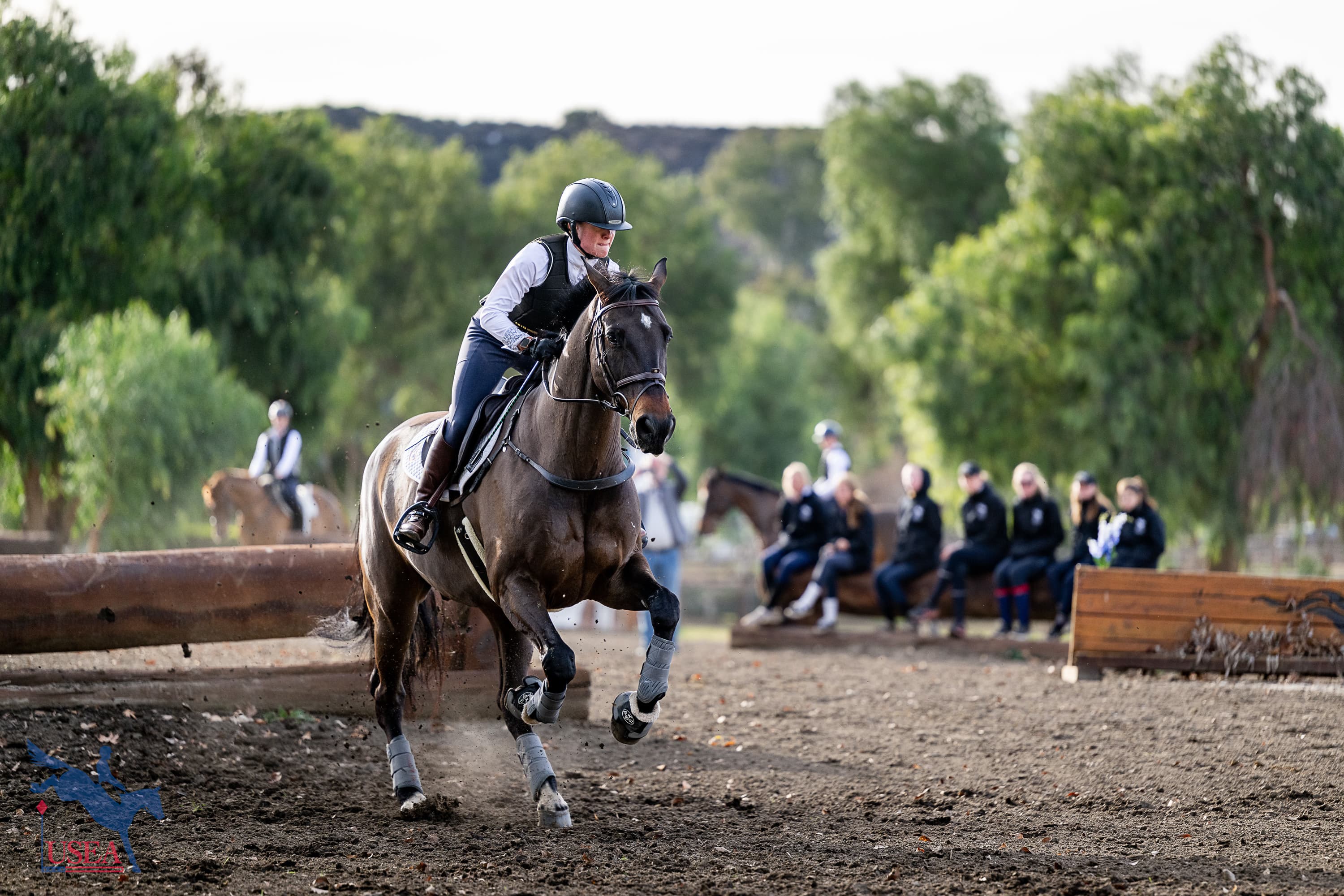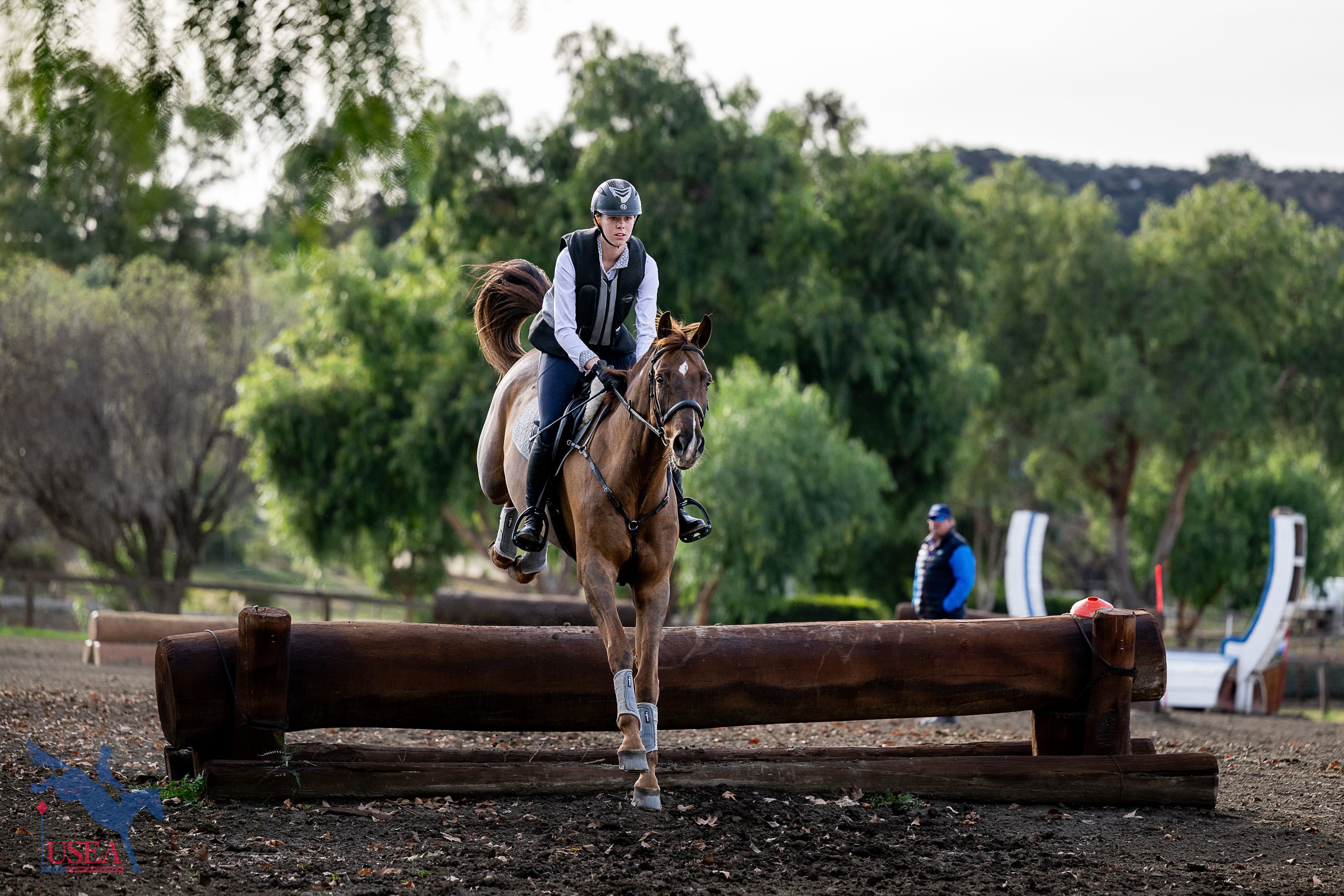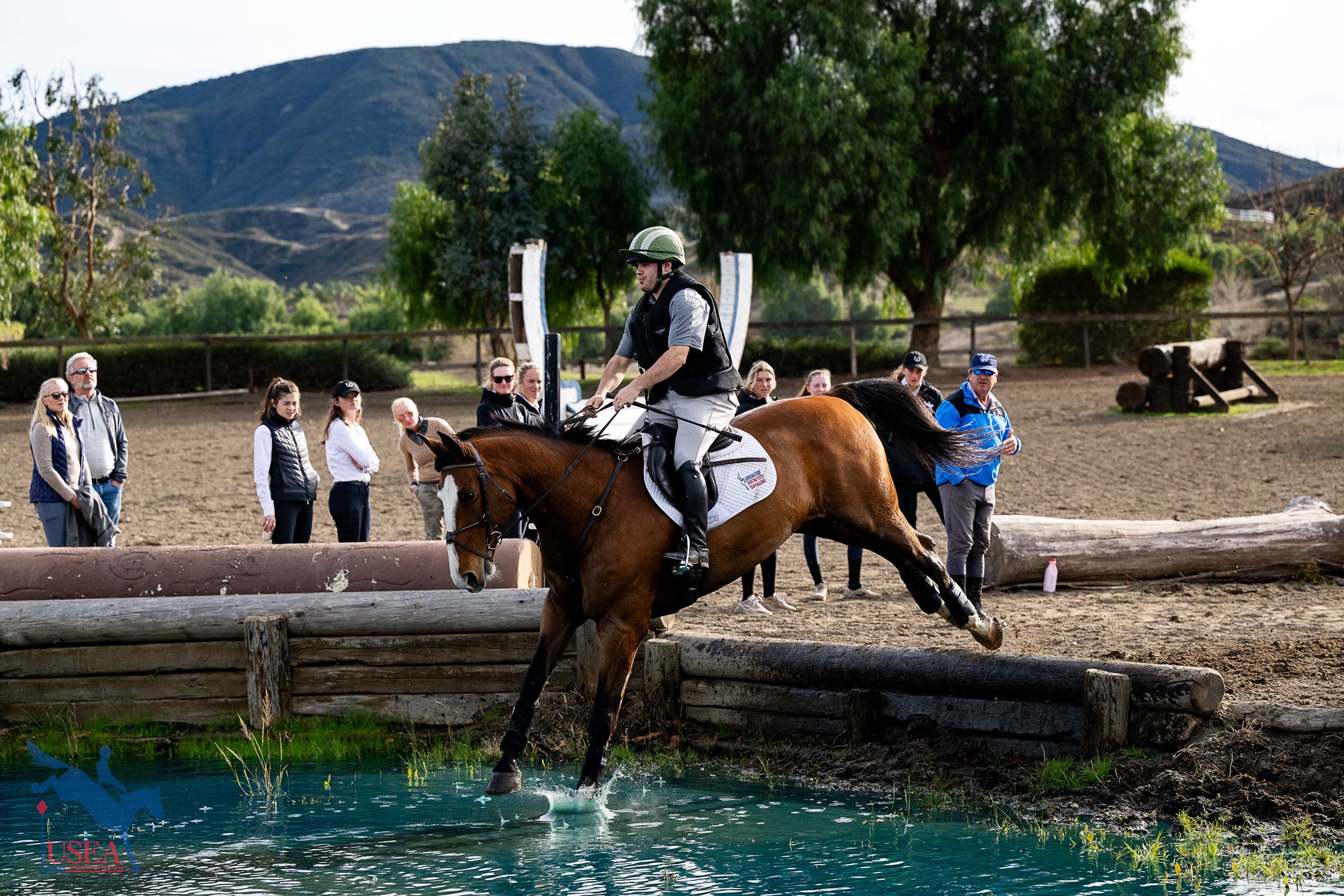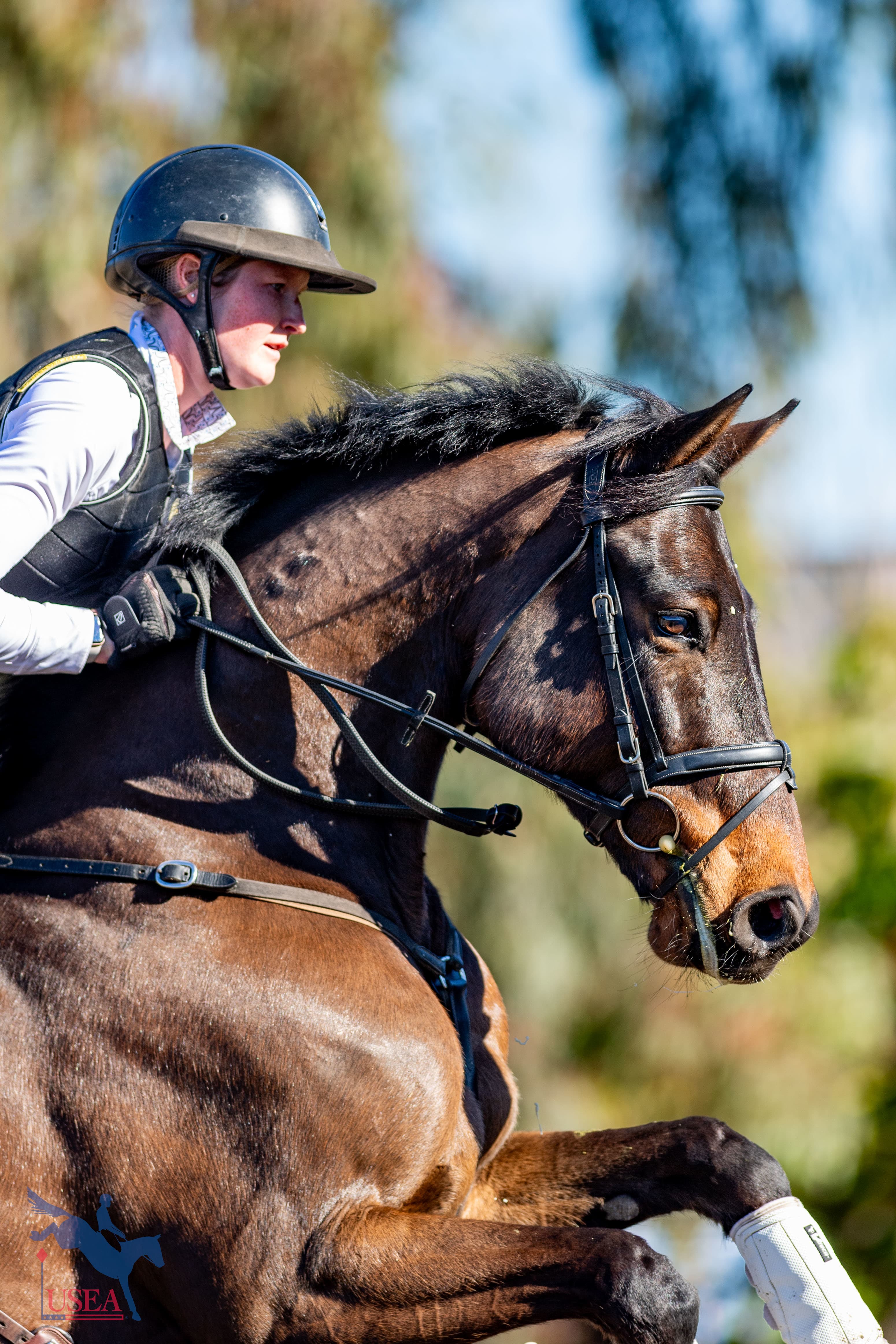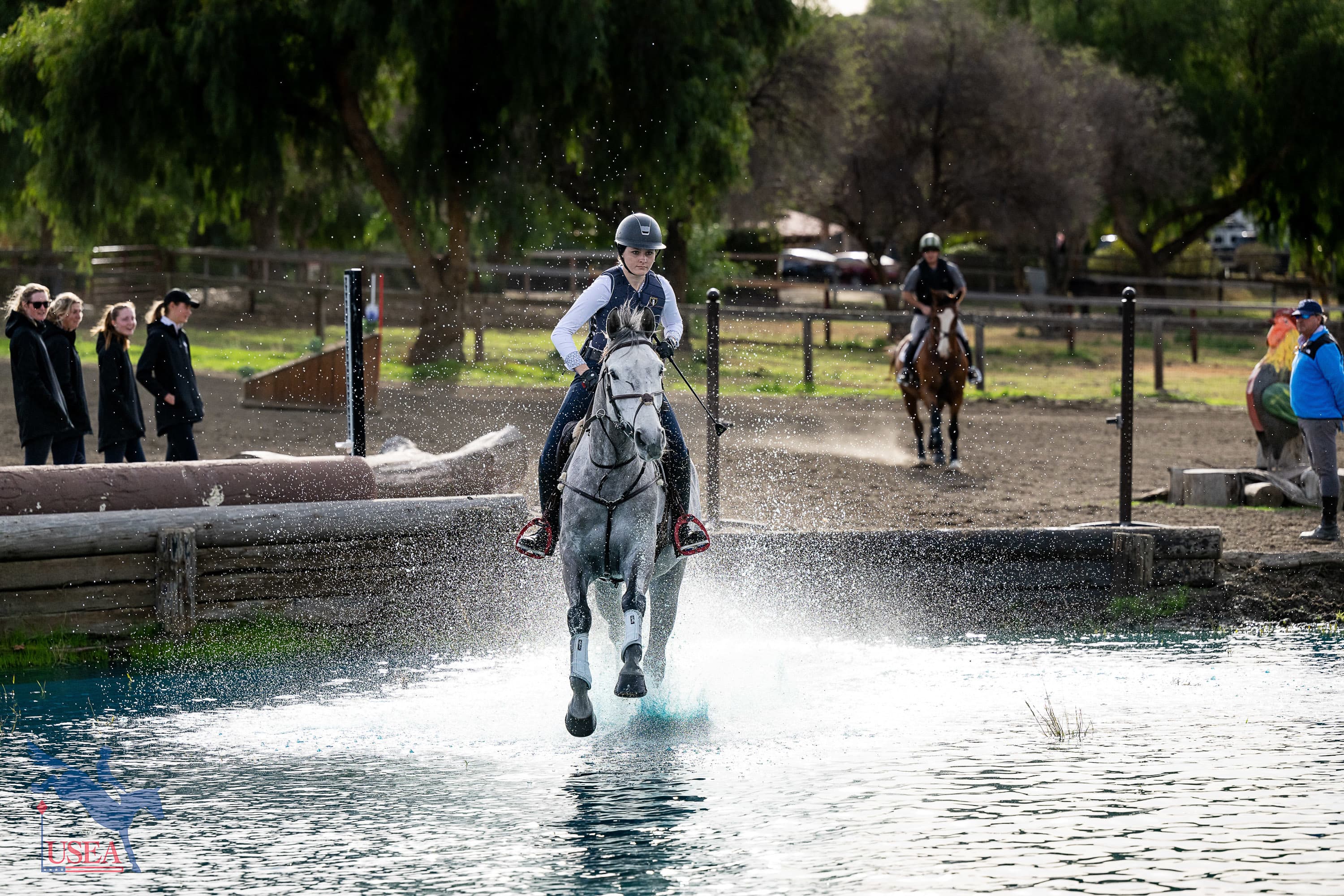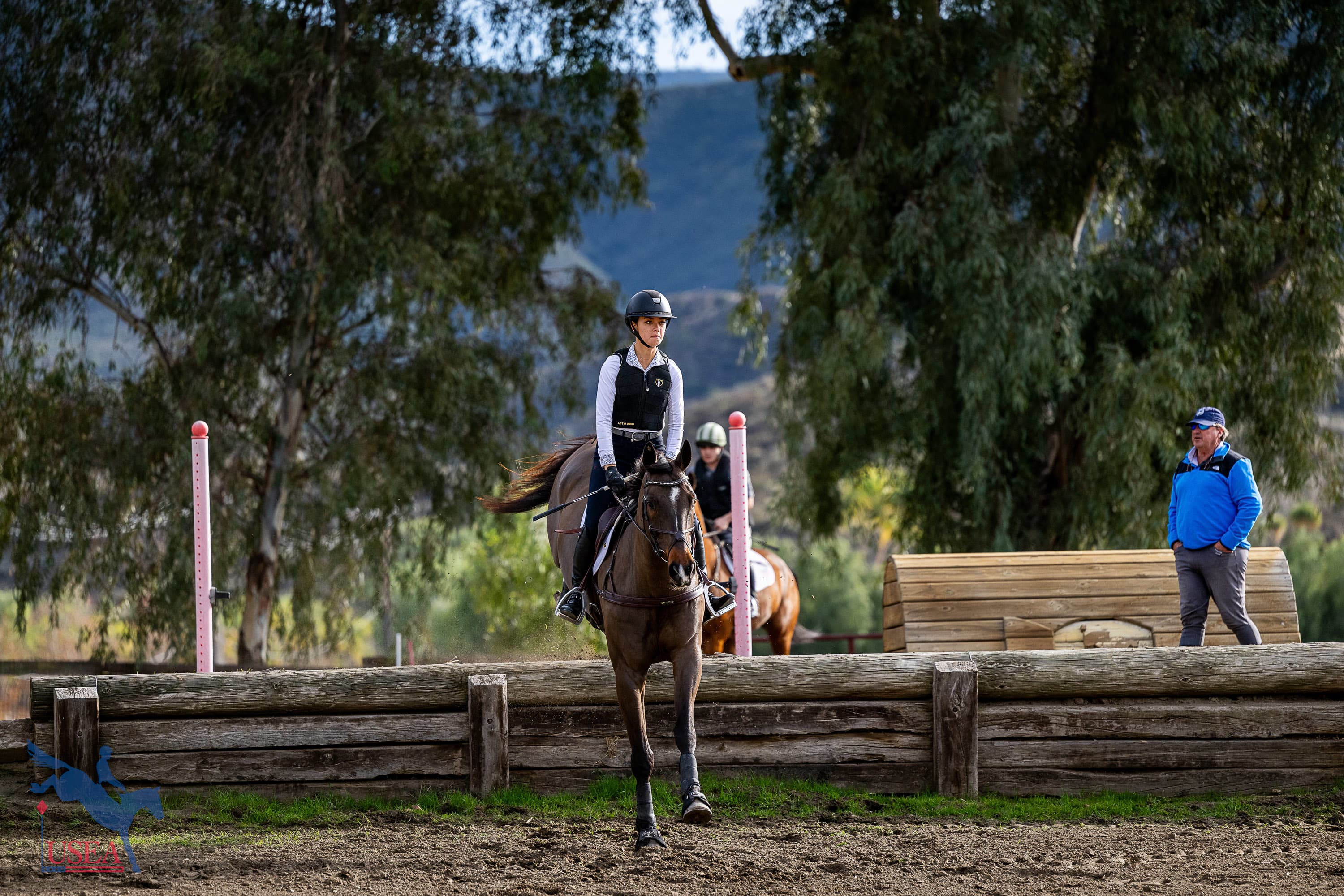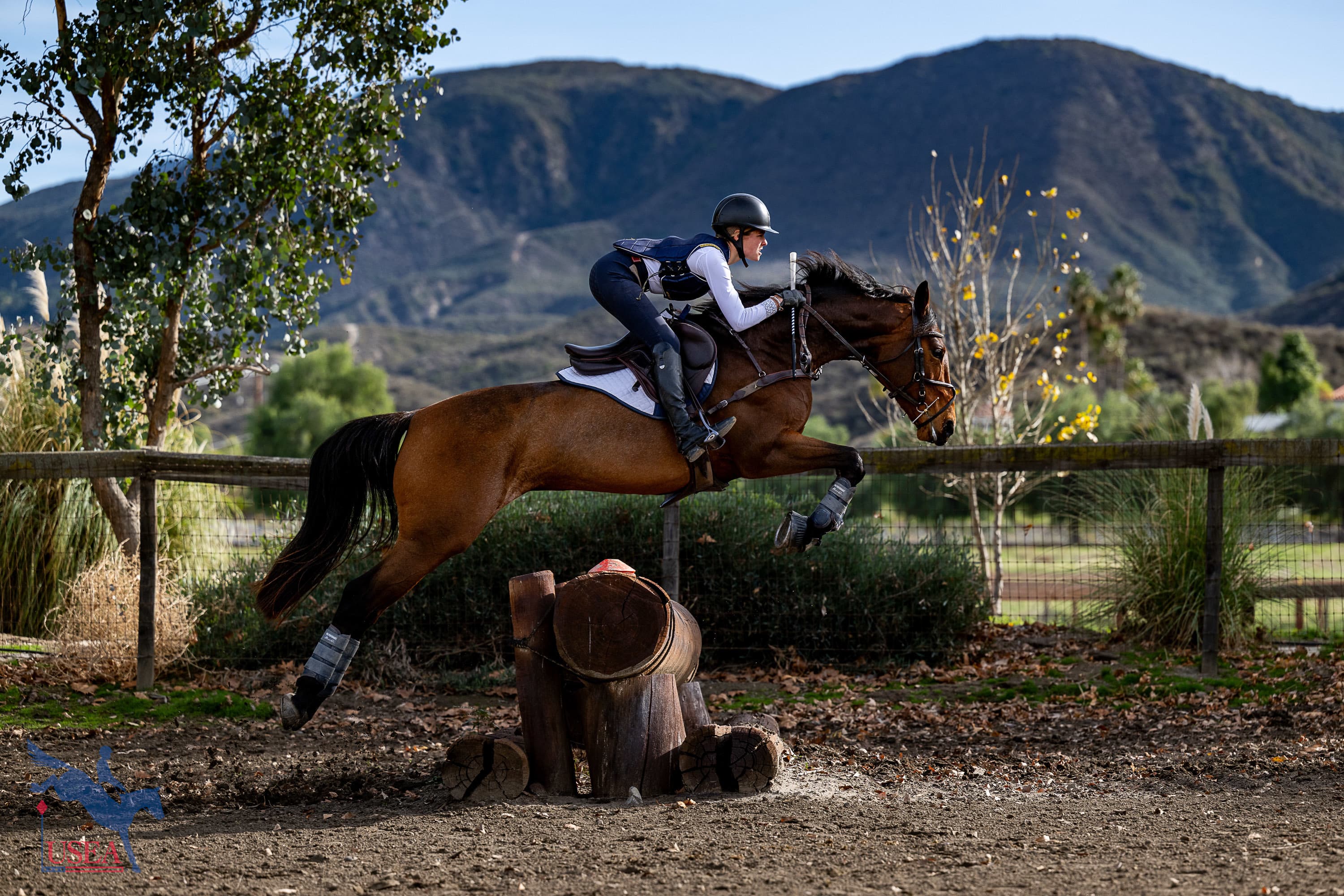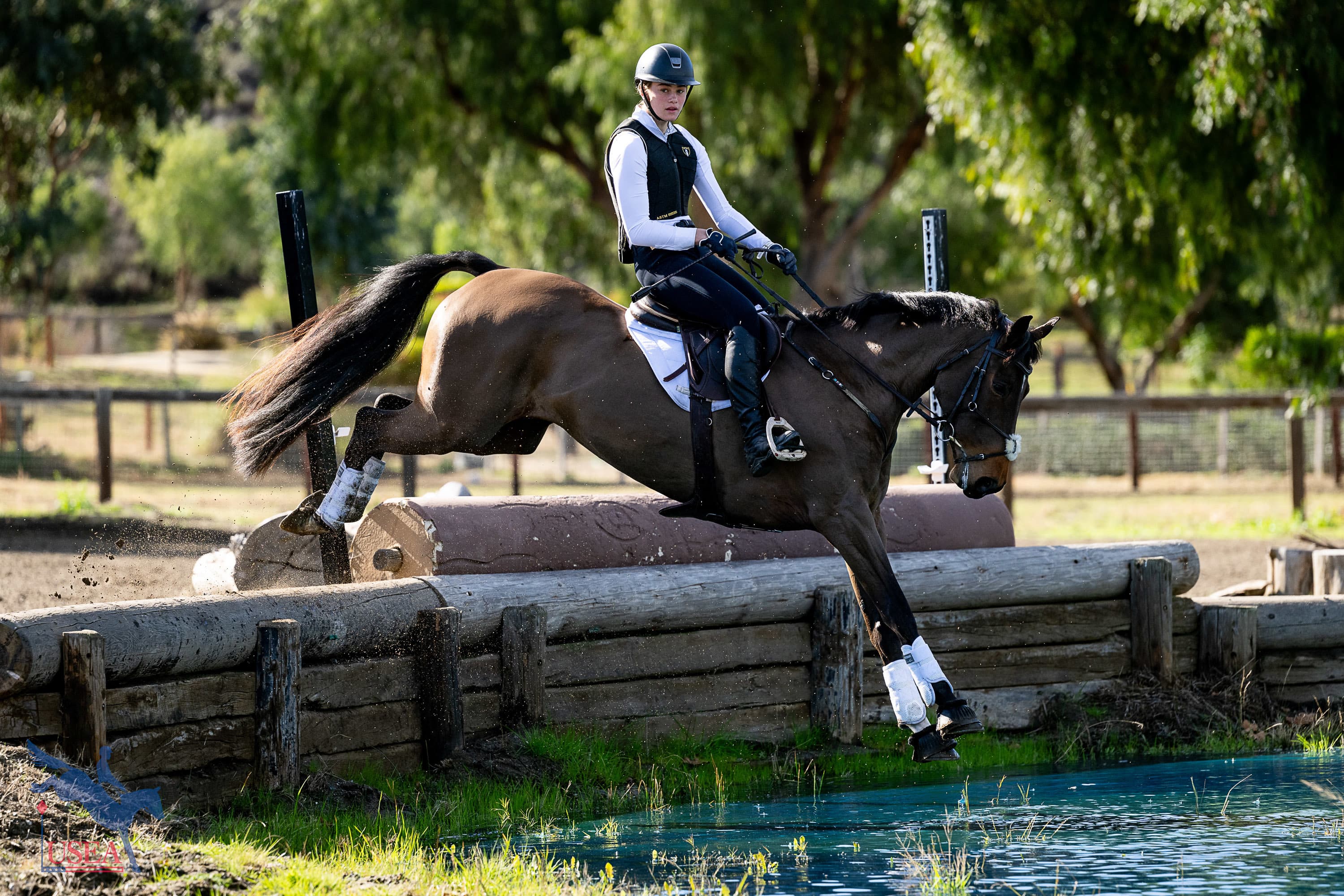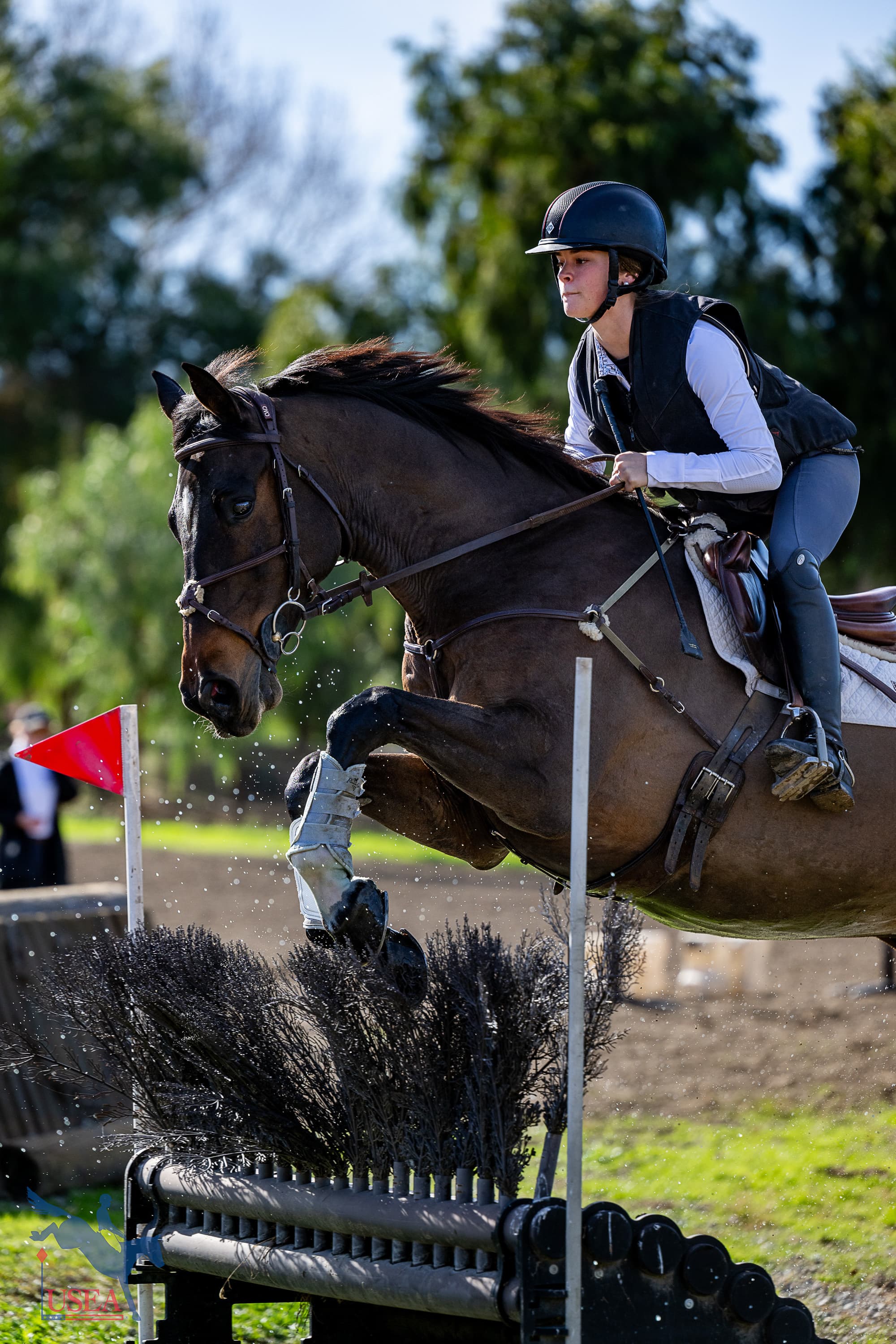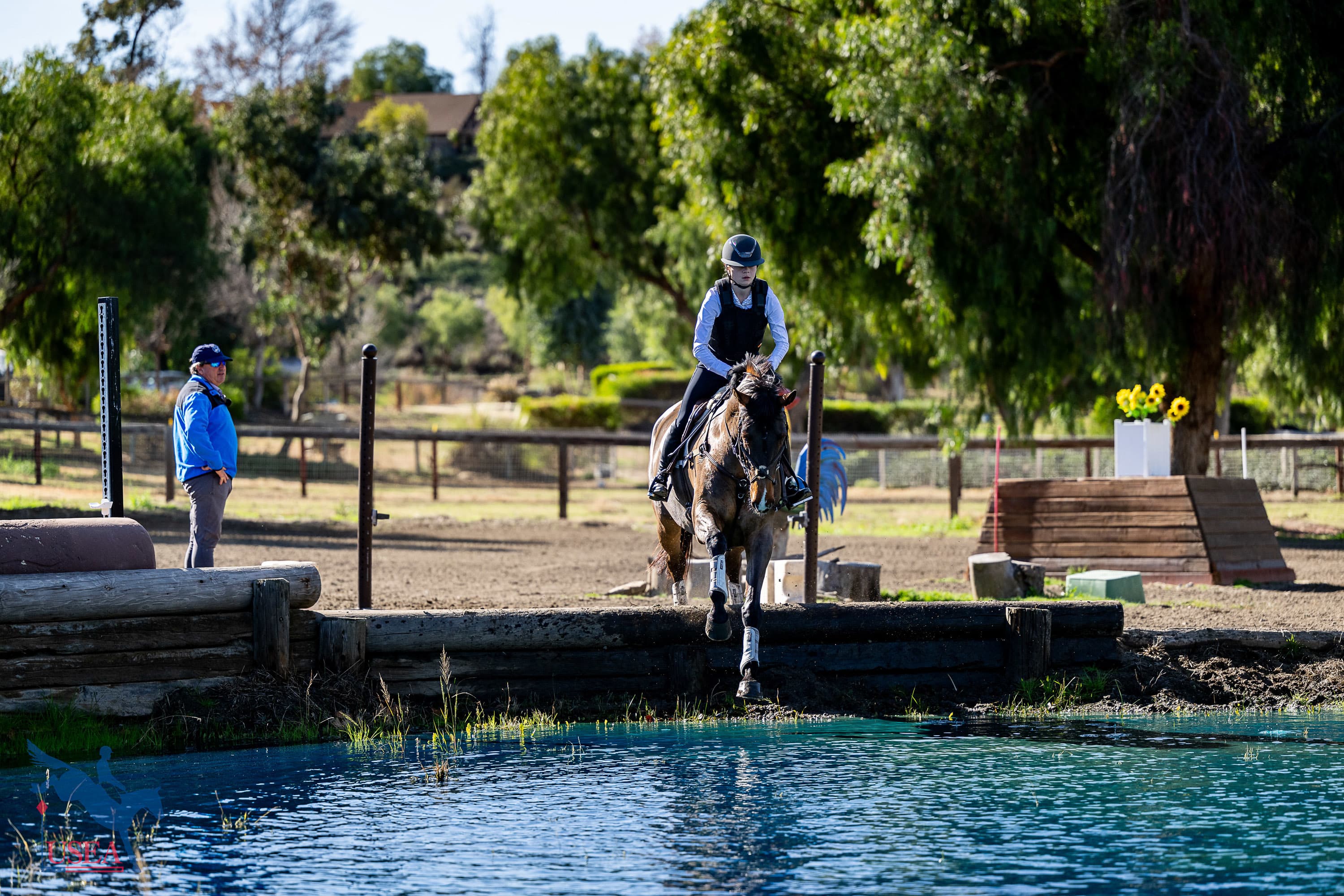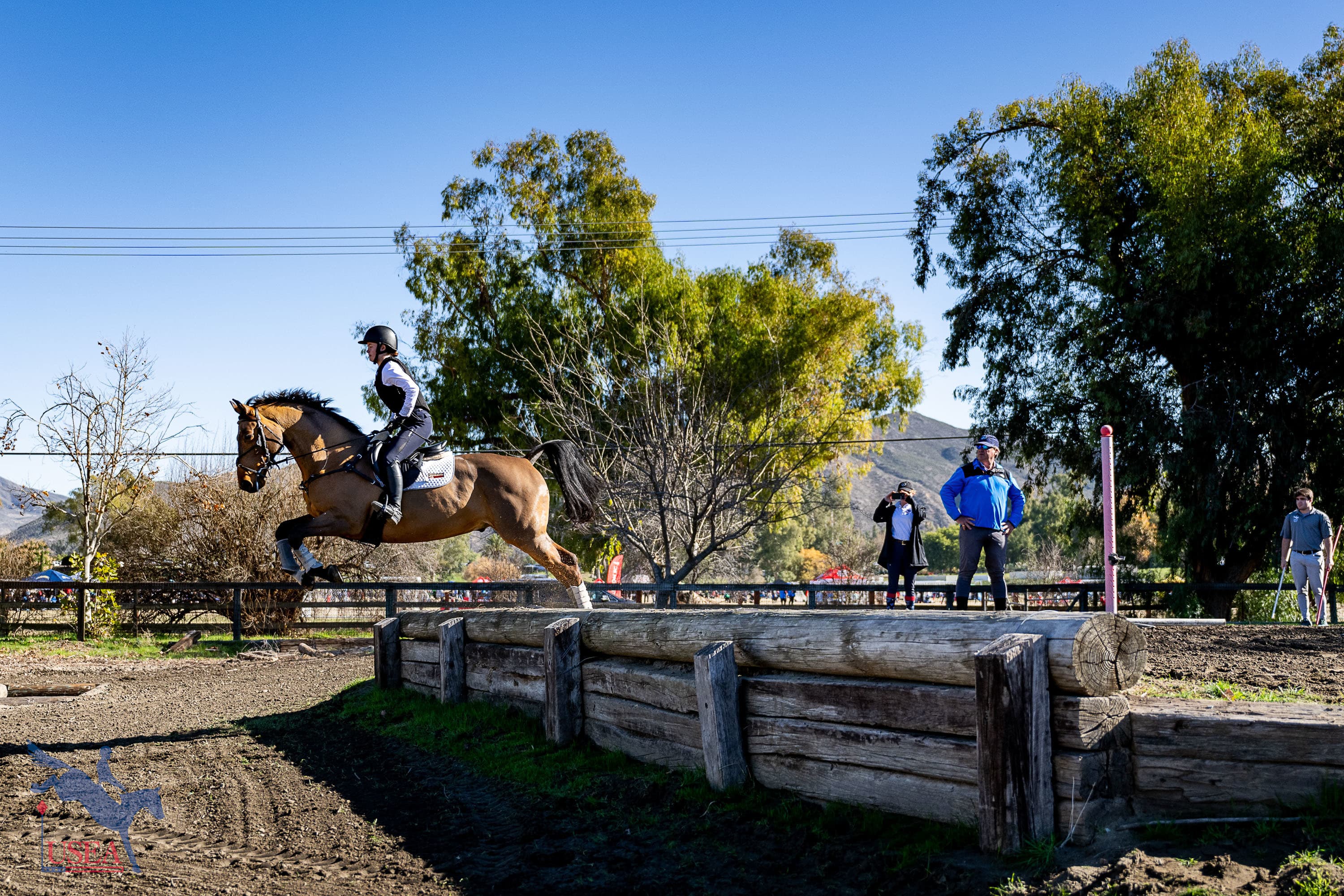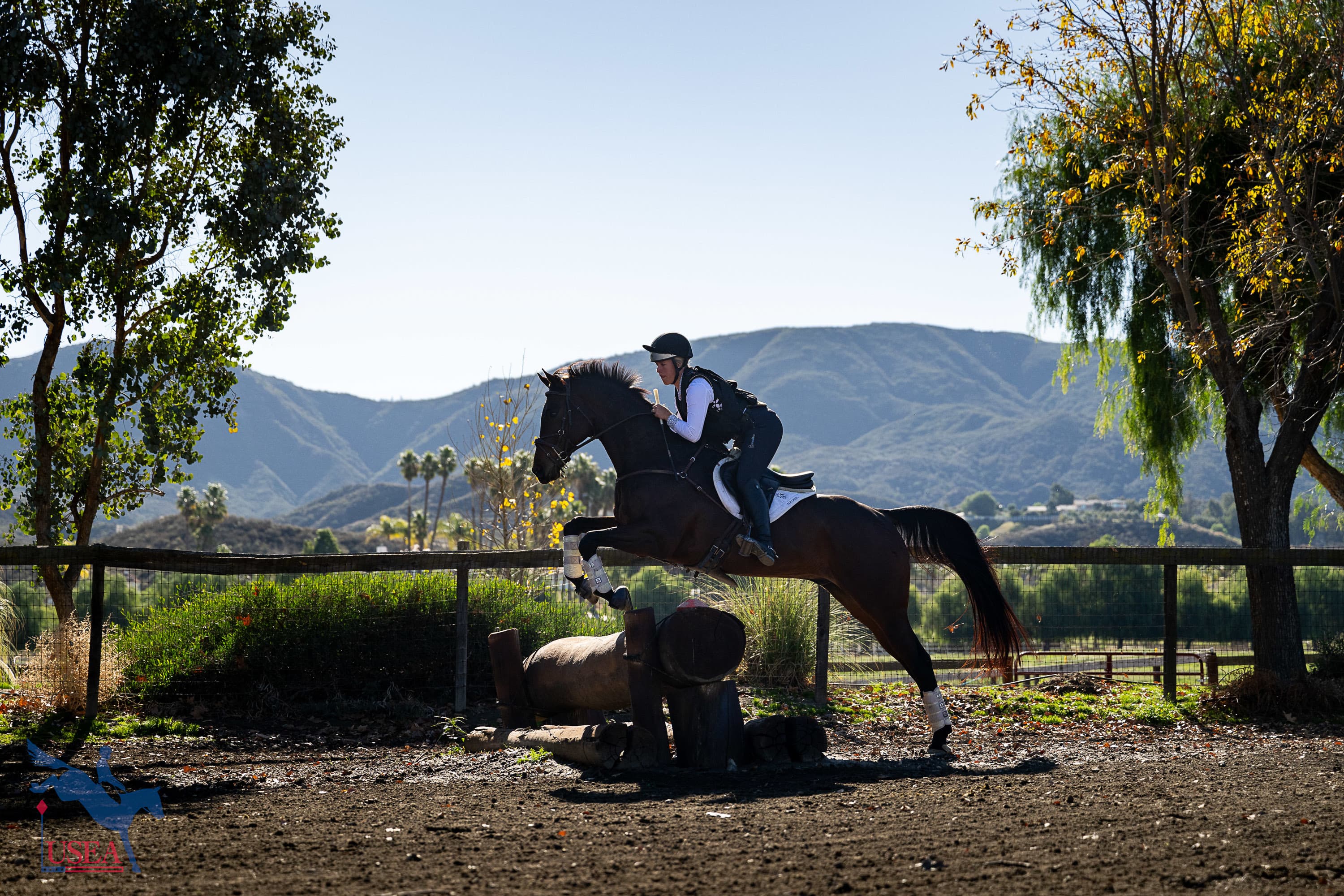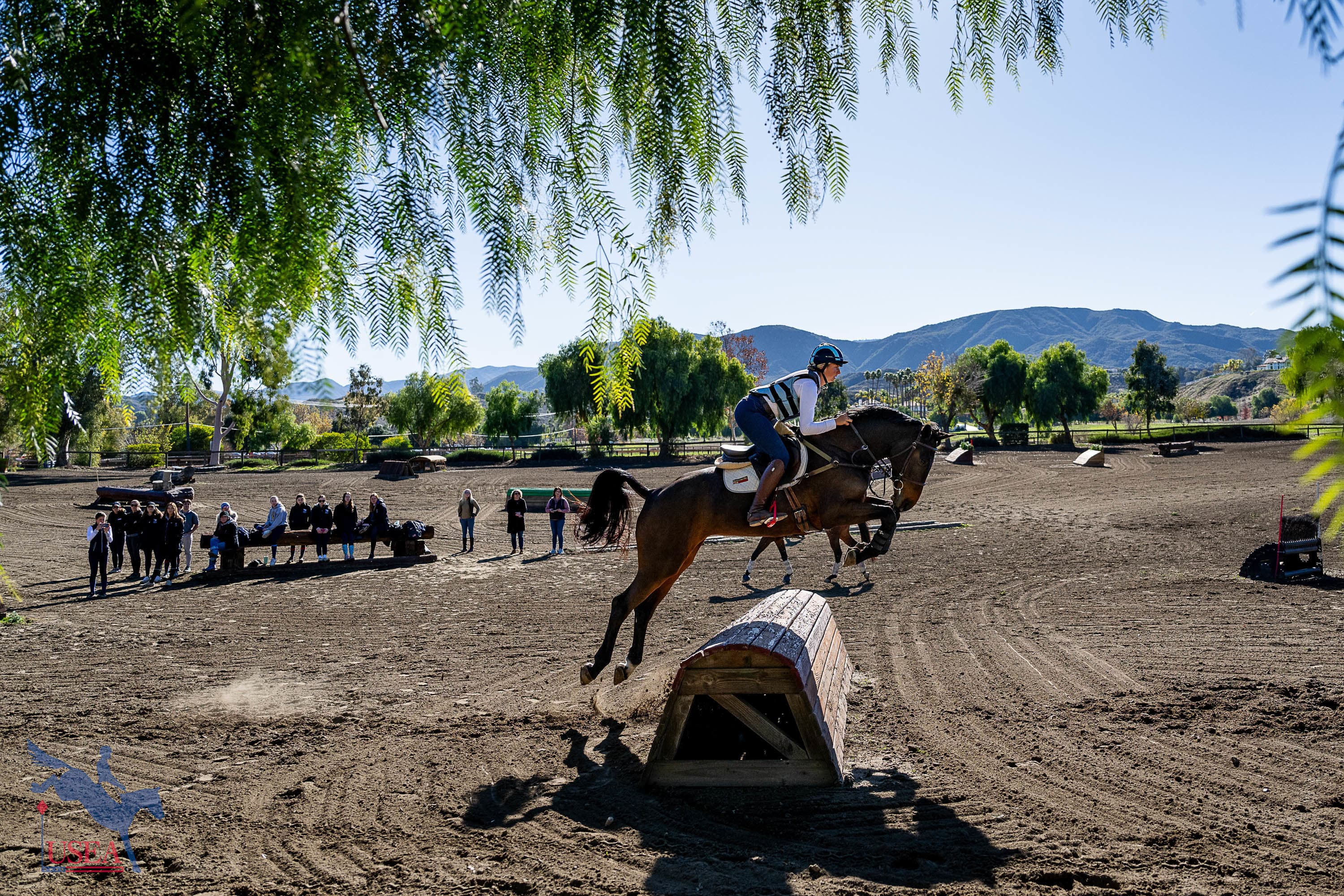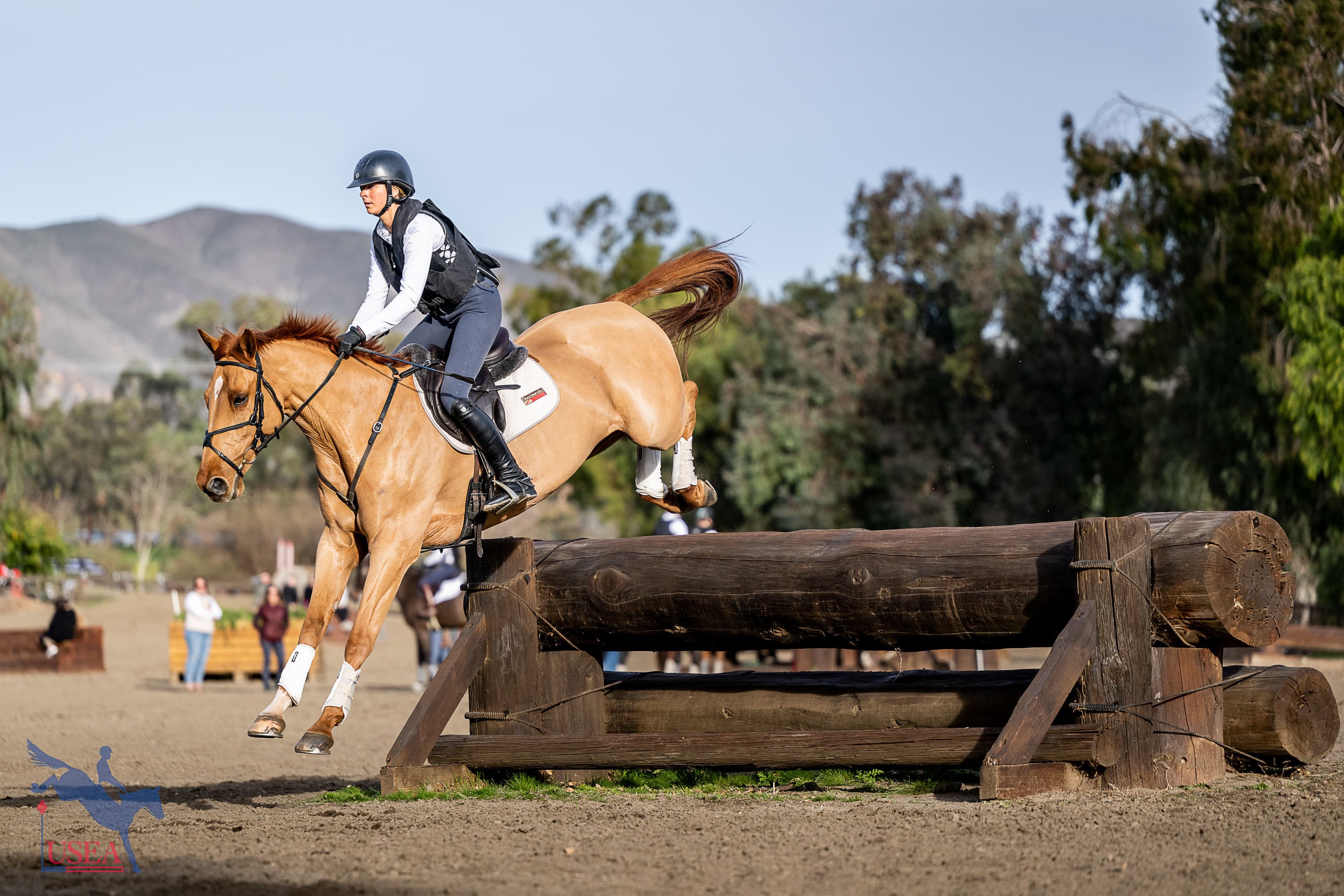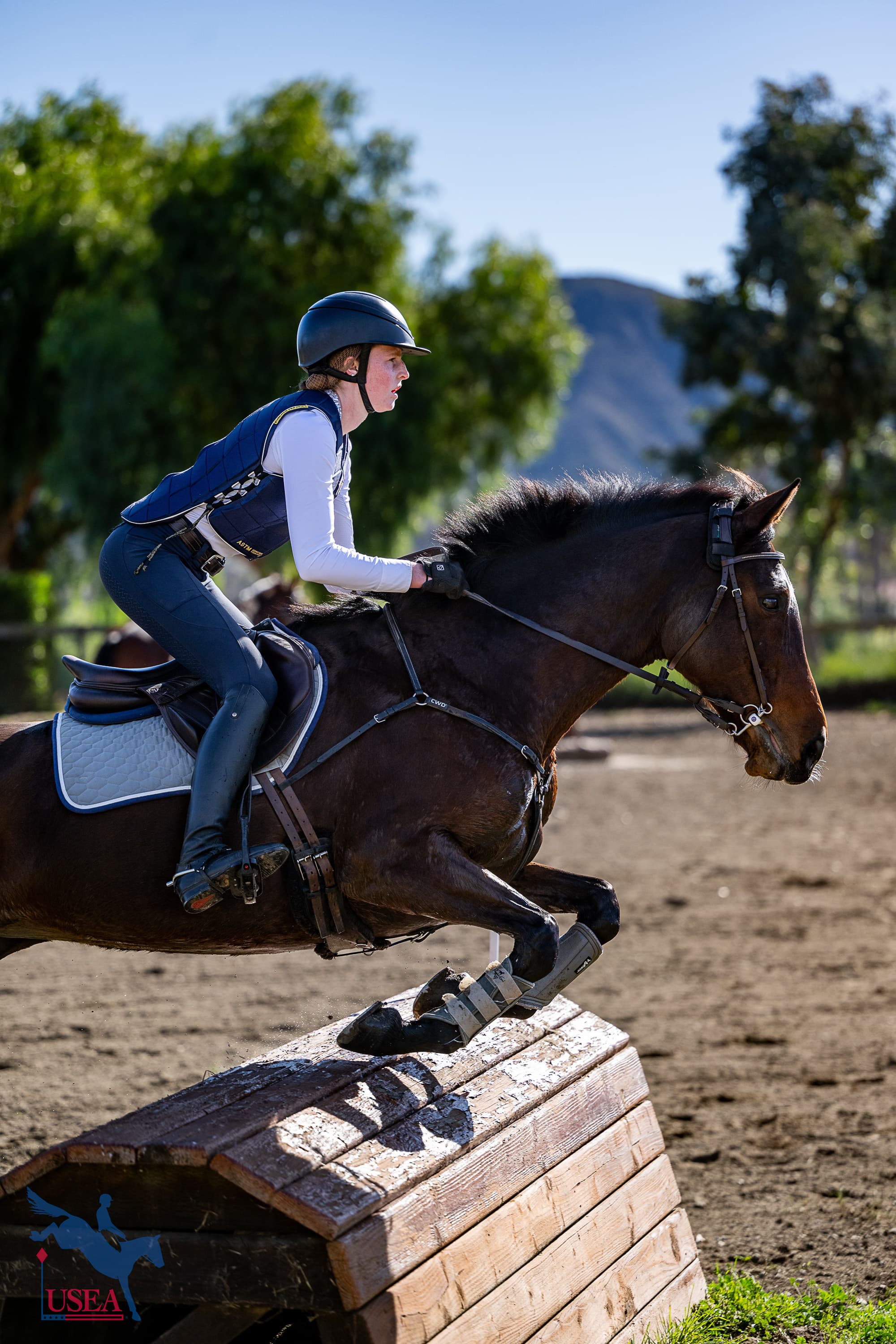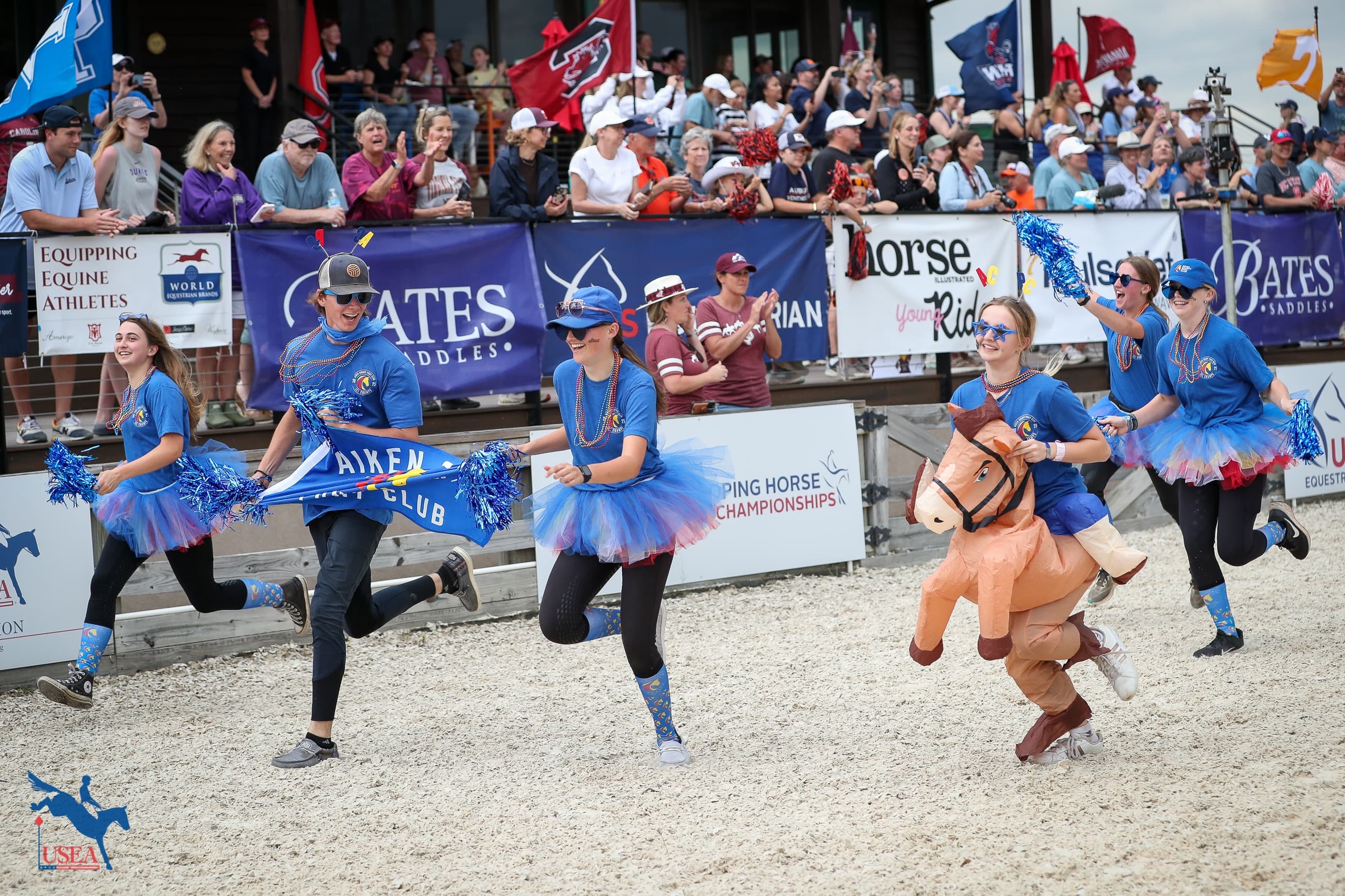Pyramid Built on the Final Day of EA21 National Camp
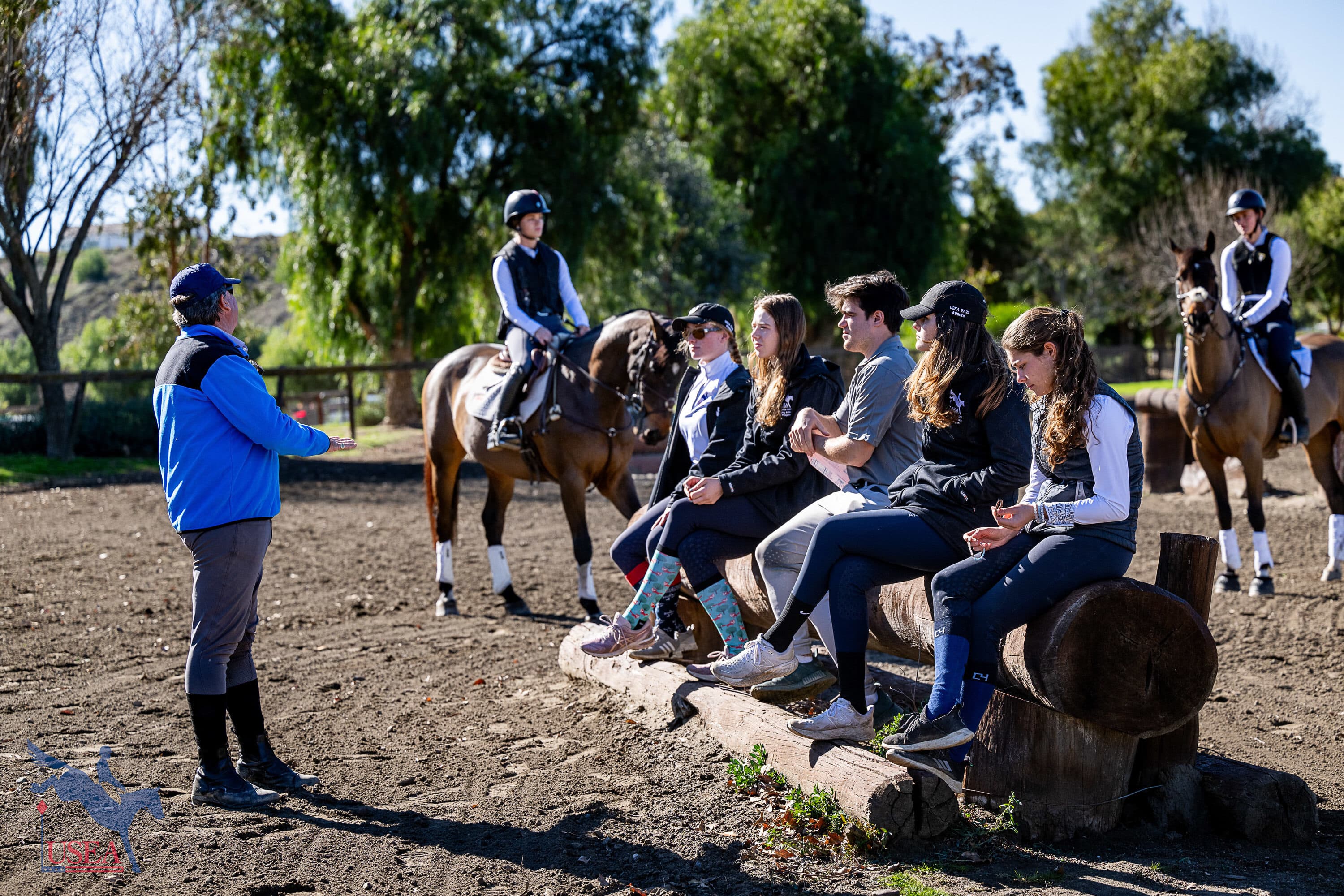
Temecula, Calif.—Jan. 6—The last day of the EA21 National Camp held at Kingsway Farm put the top of the pyramid into place with its focus on cross-country day. After four days of arena work, theory, and a solid foundation, it was time to see how training in the ring translated to out of the ring.
But before any cross-country riding could even be discussed, participants were treated to a lecture by EA21 coach Rebecca Brown, resident financier with a Bachelor of Science in finances from George Mason University. Brown covered contracts, syndications, long-term financial planning, how to separate different income streams, and non-profit resources. “Do the math,” she repeated. “You got to have a plan, you can’t wing it.”
In addition to the math: “Be shameless about asking for money. It’s uncomfortable but you got to do it.”
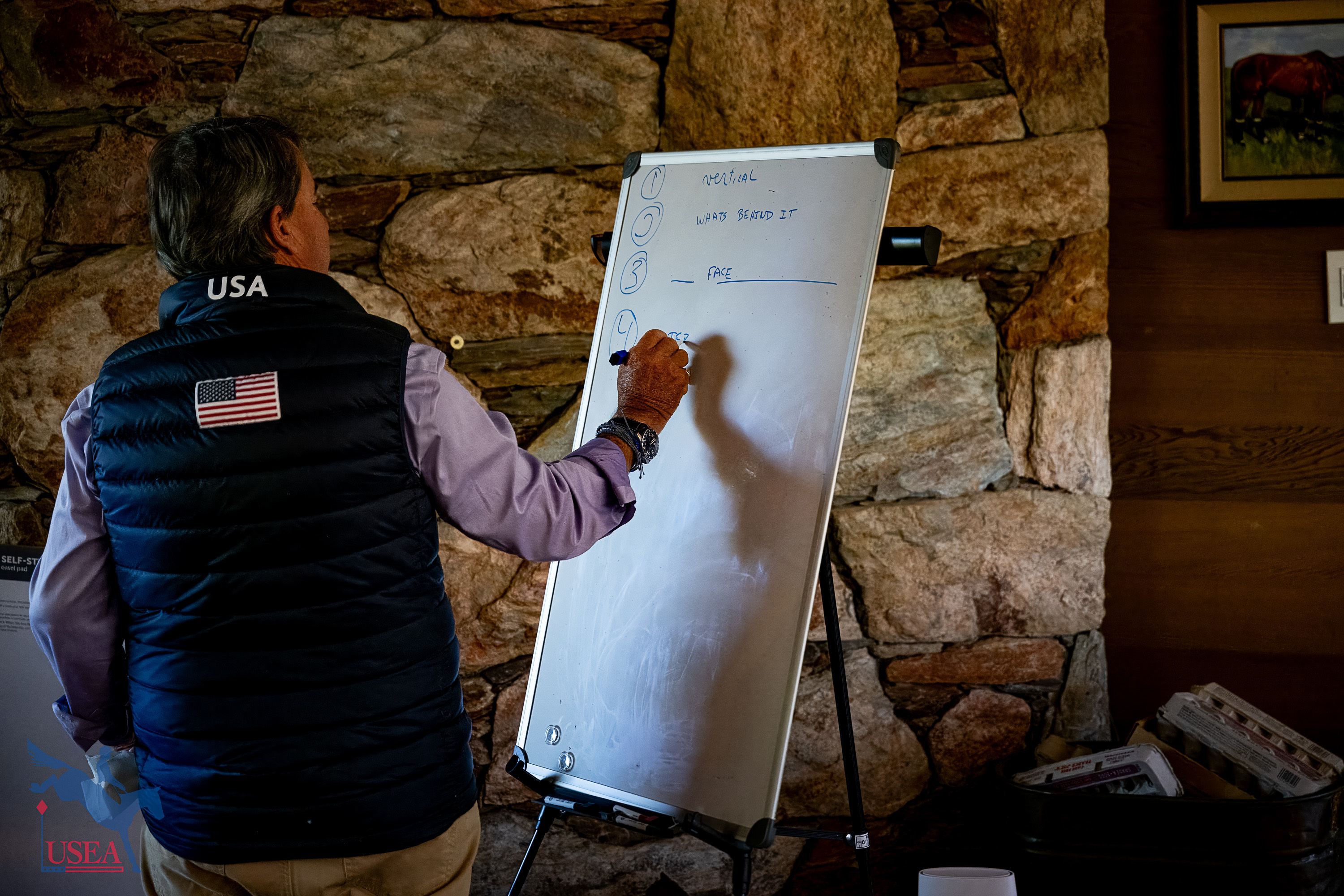
David O’Connor, EA21 Director of Coaching, began his final lecture of the week with the three rider positions for cross-country: galloping, preparation, and drop. In galloping position, the rider’s hip angle closes to allow the forward motion of the horse to move unhindered and stays off the horse's back. In the preparation position, the hip angle opens, creating a leverage point with which contact, connection, and speed can be communicated to the horse more easily. Finally, in the drop position, the rider keeps their shoulders steady and allows their hip angle to open even further as the horse drops below the perpendicular line of the ground.
“If you lean back, you get stiff and punched back [in the saddle] on landing,” he described before going on to say that “a huge rule is you don’t gallop in prep position and you don’t prep in gallop position.”
Just as riders were asked to use corners to create a natural half-halting point in dressage and gaps on show jumping courses as check-in places with their horses, the change between a galloping position and a preparation position could serve the same function. A small change in body position indicates to the horse the difference between galloping time and jumping time. The streamlining of communication between horse and rider without interrupting rhythm is the difference between a competitive cross-country round and one with time penalties.
Rhythm should not be interrupted but speed is a different matter.
“There are four reasons to change speed on cross-country: the vertical face of a jump, what’s behind it, width [narrow or wide], and terrain,” O’Connor said. “If you are going to change speed, you have to get it done. It’s not a choice.”
Just as paramount as rhythm on cross-country is horse confidence. O’Connor spent time in the lecture describing how to introduce young horses to ditches, banks, and water and how to keep experienced horses feeling confident.
“If you’re schooling a line, do the last thing first so the horses know what’s coming,” he instructed. For example, if there is a triple combination to school, start with the third element and then add the second, then the first so that the horses build their understanding with obstacles they have already done.
In addition to building up a line, riders should also school in order of difficulty. When schooling a bank, always start by going up before going down. When schooling a coffin combination, start by jumping just the ditch by itself, then add the third element, then the first.
Every riding group got to put into play exactly what O’Connor meant.
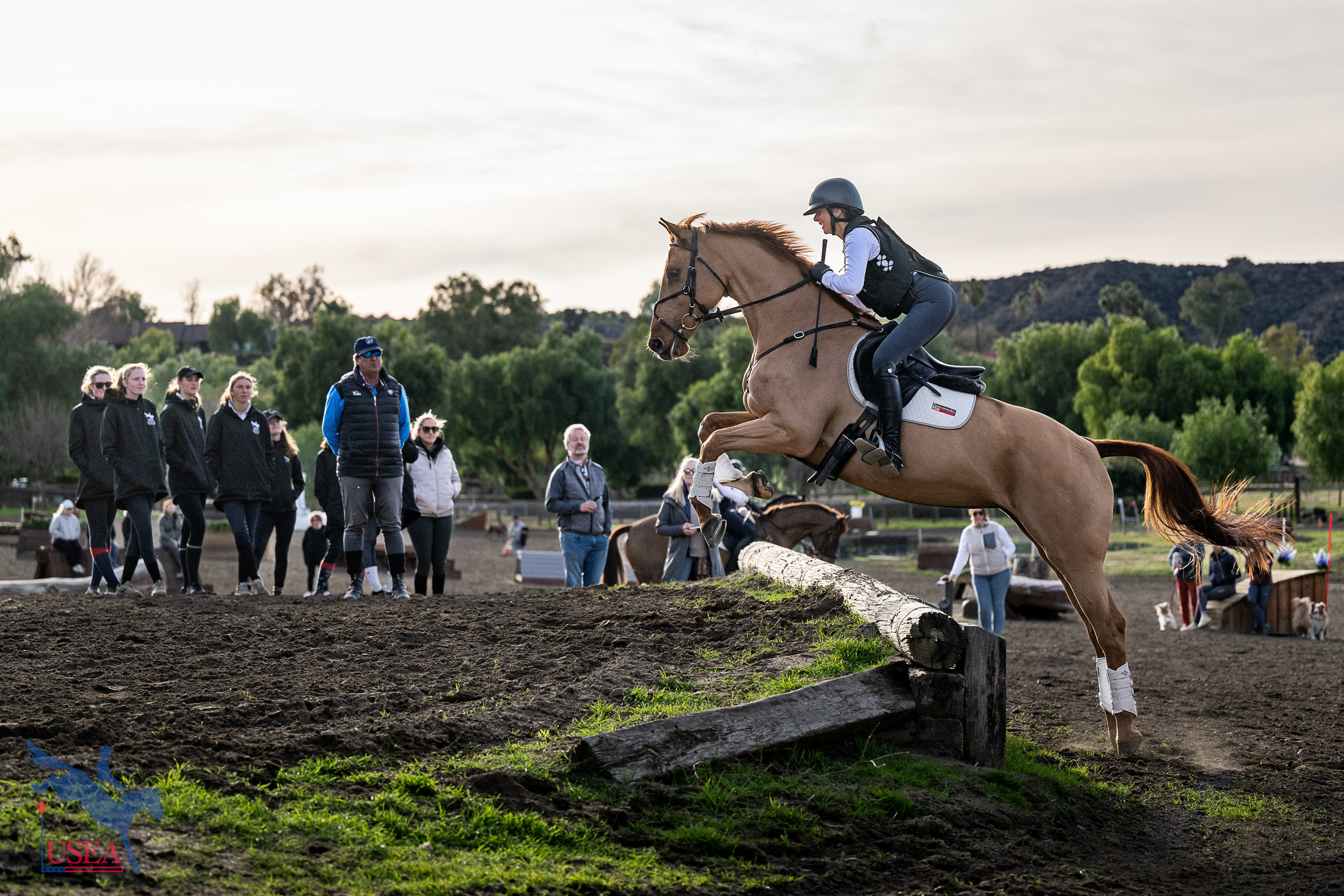
After warming up, riders galloped single fences, working on balance and rhythm before adding a terrain element to the same exercise. They then moved on to schooling a bank by itself then adding a one stride at the top and schooling both ways. A quick hop over the ditch then trotting through water before doing the same bank exercise and one stride with a water element. Some groups added a narrow brush to their water schooling before finishing on two verticals set up on mounds to a small coop.
Each element was schooled separately before being put into a line and for some horses, fences were changed to be more inviting by using a lower bank, dropping a rail, or adding guide poles.
Perhaps the biggest takeaway of the day was how allowing a horse to use its body can avoid an explosive jump.
“Allow them to look down,” O’Connor cautioned. It’s a natural mechanic of a horse to look down to see what the obstacle is before using their head and neck to lift over the fence. “Study that [moment] when they look down. [Ask] how can I support that.”
Quite a few horses had power in spades in their jump which resulted in some tighter hands. Coming to the down banks, they would often leap across and down, speeding down the hill and making riders work to find a better, more controlled canter. For one group in particular, O’Connor had them all jump a low vertical one stride before the bank then slip their reins all the way to the buckle before the bank itself. It was a night and day difference for everyone to see how much softer and more relaxed the horses were when they had more movement in their neck to jump.
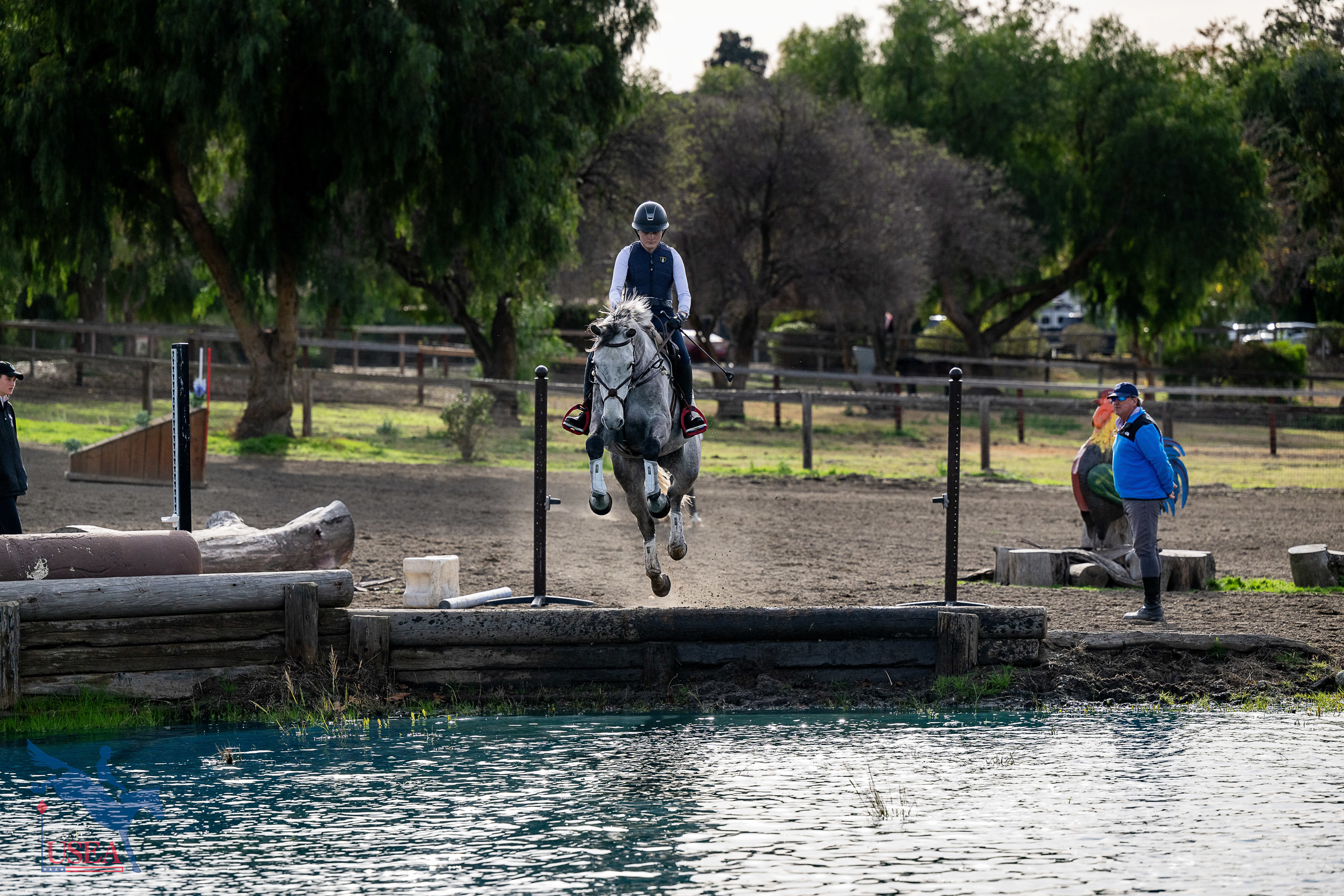
But all good things must come to an end and so too did the EA21 National Camp.
“My goodness, we've had such an information overload,” Kelsey Seidel exclaimed when asked to reflect on her experience. “I'm really glad that I have a notebook that I'm able to write the little things that David says down during the day and then go back over it at night or even before my ride.”
“This weekend has been very, very educational,” Tate Northrop agreed. “The catch riding has been great. We got to go back to the basics this weekend and that is really good to refresh on.”
Everyone agreed that basics were re-appreciated after the week with O’Connor. When asked what tools she was most looking forward to bringing from the camp to her daily rides, Elsa Warble had this to say: “The discipline and accuracy that you need to establish every day and do the same thing, every transition, every corner. It's all consistent so that the horses go better.”
The training scale pyramid was finally built and it was felt both in the physical understanding of riding and the mental side. “I think it's very systematic.” Annabelle Sprague commented. “I feel like David has a plan and every day we're all seeing it [in the horses] like he sees it all along.”
“Every time I hear [O’Connor’s lectures], [the theory] makes much more sense, and taking it and applying it to the riding has been amazing, especially on a different horse,” Katherine Hyndman said.
The going backward has helped some move forward. “I definitely was in a bit of a rut before I came here,” Kiersten Miller explained. “A lot of the sport is definitely mentally challenging. Now I get to go back [home], I get to do all these different exercises, go back to the basics, and feel re-inspired about [the sport] in the process.”
For those interested in applying to future EA21 opportunities and searching for the same inspiration, Sarah Ertl advised that those who did get accepted to be ready to “devote all of your time, energy, and focus into what we're learning because it's really useful.”
“The questions on the applications, you need to think about your answers and not just what they want to hear from us.” Kelsey Seidel added. “Be truthful with yourself and with your horses.”
It wasn’t just the riders who noticed improvements in their knowledge, theory, and abilities. “You saw a lot of improvement, people kind of getting some big concepts,” O’Connor remarked at the end of the day. “It’s a huge difference, I think they're riding way better.”
For a young program with two years to its name, what do those improvements mean? In that trademark simple way of stripping everything down to its core concept, O’Connor said: “That means that the program is starting to work.”
The most enormous debt of gratitude is owed to Linda and Terry Paine of Kingsway Farm and Tamie Smith and the whole team at Next Level Eventing for the use of their wonderful facilities. Additional thanks to Bec Braitling, Teresa Harcourt, and Kaylawna Smith for the generous use of horses.
Applications open for the 2024 EA21 program in February.
Helpful Links:
Don't forget to follow the USEA event coverage on social media!
About the USEA Emerging Athlete U21 Program (EA21)
The purpose of the USEA Emerging Athletes U21 Program (EA21) is to identify and provide consistent quality instruction to the next generation of elite event riders. The aim is to create a pipeline for potential team riders by identifying and developing young talent, improving horsemanship and riding skills, and training and improving skills and consistency.
The USEA Emerging Athletes U21 Program was launched in 2022 with a model of five summertime regional clinics taught by selected USEA Eventing Coaches Program (ECP) instructors, leading to a winter national camp consisting of selected Young Riders from the regional clinics. Athletes who are 21 years or younger, are current members of their USEA Young Rider Area program, and are established at the Training Level or higher, are eligible to apply for the EA21 program. Click here to learn more about the USEA EA21 Program.
The USEA would like to thank Kerrits, Ride iQ, Sidelines Magazine and WeRideTogether for sponsoring the USEA Emerging Athletes U21 Program.
